Clematis are beautiful fairly low maintenance plants that can pack a lot of color into your garden. They fit very well into most types of gardens and can be used to create vertical interest. Clematis can range from a couple feet tall to heights of 20 to 30 feet. Learn about Clematis Care below.
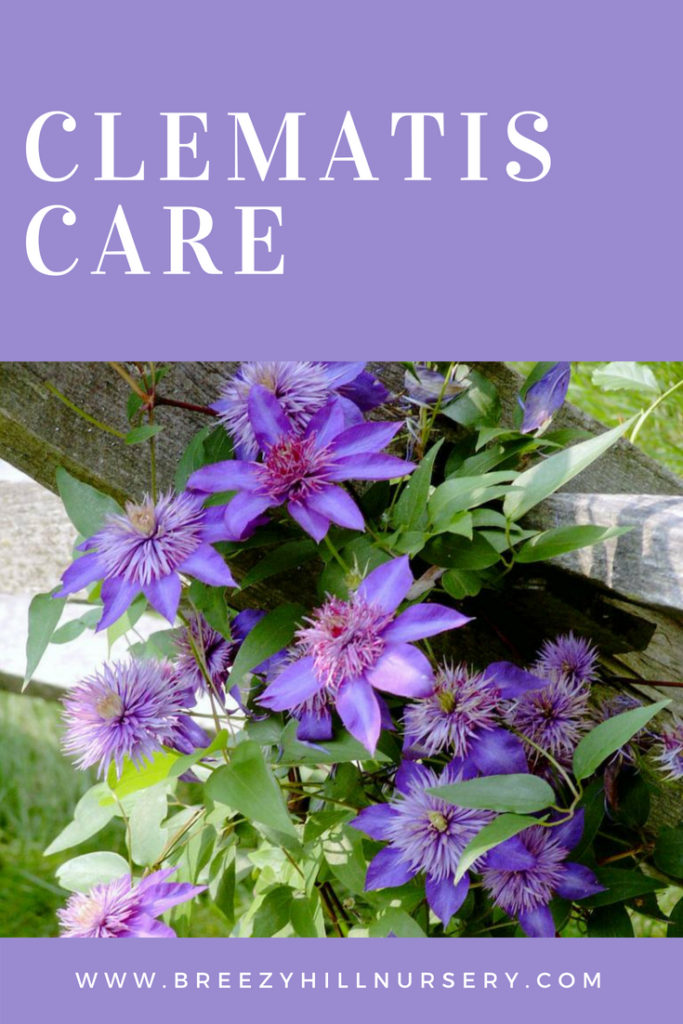
Clematis Care
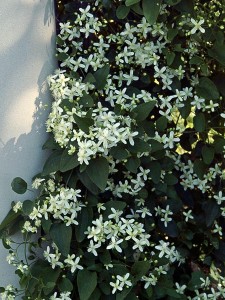
Clematis terniflora
You can cool roots of clematis by covering the base with a thick layer of mulch. Make sure that the mulch is not piled up against the base of the plant which can cause rot.
Cooling the root zone can also be accomplished by planting other material near the base that will cast shade on the base of the plant.
Remember the useful well known saying regarding planting clematis, “Plant their heads in the sun and their feet in the shade”.
For best Clematis care, the plant also requires moist well-drained soil. They do not grow well in overly wet compacted soils or very dry soils. If your soil conditions are not ideal, make sure to amend the soil with composted manure and peat moss during planting.
Clematis are very active growers and most will readily attach to any given support system as they grow. Some initial tying may be needed to secure the vines and prevent any damage from wind or simply flopping over.
All Clematis should be pruned to about 12” above the ground the second spring that you plant them. The third spring cut them down to around 18”. This will encourage a better fuller plant with a larger root system. After your clematis has been established, follow the techniques that are recommended for the three different pruning groups.
Pruning Group 1:
The clematis in this group tends to bloom early in the season. They bloom on buds that developed the previous season. Clematis in this group should only be pruned after they bloom. If pruned too late in the previous season or before they bloom during the current season you will remove potential blooms from your plant. Groups 1 clematis can be pruned throughout the season to keep the plant within its designated area or to remove dead or unsightly foliage.
COMMON CLEMATIS IN GROUP 1 INCLUDE:C. MONTANA, C. ALPINA, AND THE C. MACROPETALA VARIETIES
Pruning Group 2:
The clematis in this group tends to be large bloom hybrids. They bloom on a short stem off of previous season’s growth. This clematis should not be pruned except to shape or remove dead or unsightly foliage or wood. There are two sub-groups within this pruning group called 2a and 2b. 2a normally blooms in spring and occasionally again in fall. 2b will bloom in spring and then intermittently throughout the season. To encourage additional blooming in both sub-groups, remove the seed heads once the blooms fade.
COMMON CLEMATIS IN GROUP 2 INCLUDE, C. ‘NELLY MOSER’, C. ‘MISS LINCOLN’, C. ‘HENRYI’, AND C. ‘BEE’S JUBILEE’
Pruning Group 3
These are the summer blooming varieties such as the Jackman types, the herbaceous species that bloom on new wood and the late bloomers such as Sweet Autumn Clematis. Clematis in Group 3 flower on the current years’ growth and should be pruned back severely every year in late winter to about 12 – 14 inches. You want to leave at least two pairs of buds (4) on each stem of the plant. Most Group 3s are very fast growing and will reach their full height before blooming. If you forget to prune these, they will have long woody stems that will be bare of foliage and blooms.
COMMON CLEMATIS IN GROUP 3 INCLUDE: C. X jackmanii and C. terniflora
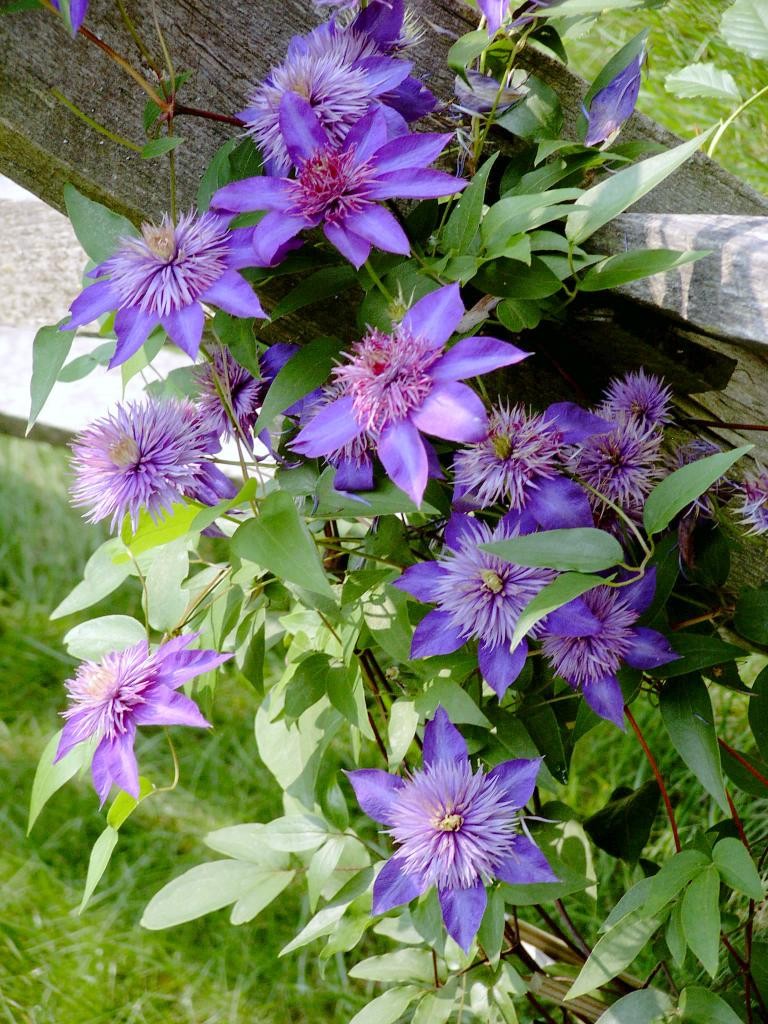
NOTE: Any of our sales associates here at Breezy Hill Nursery would be happy to answer your questions about Clematis Care planting and caring for your plants. Call us at (262) 537-2111.
If you have gardening questions please call or stop by our garden center.
You might also enjoy this post about perennials.

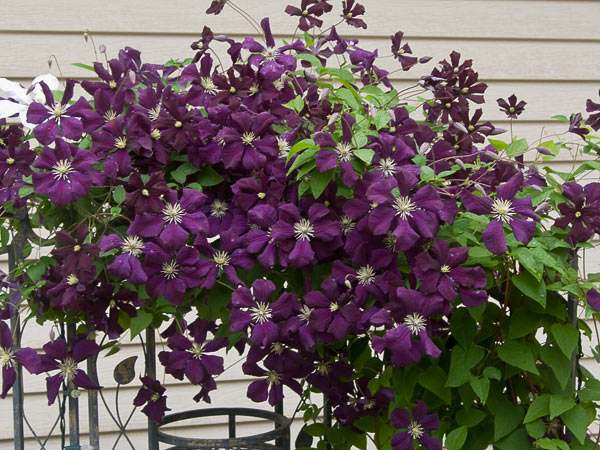

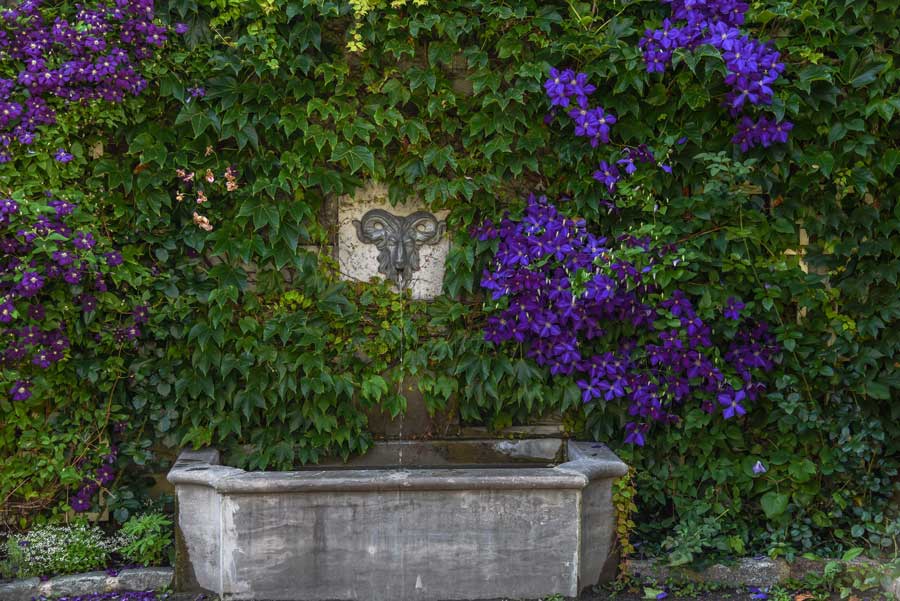
Comments are closed.